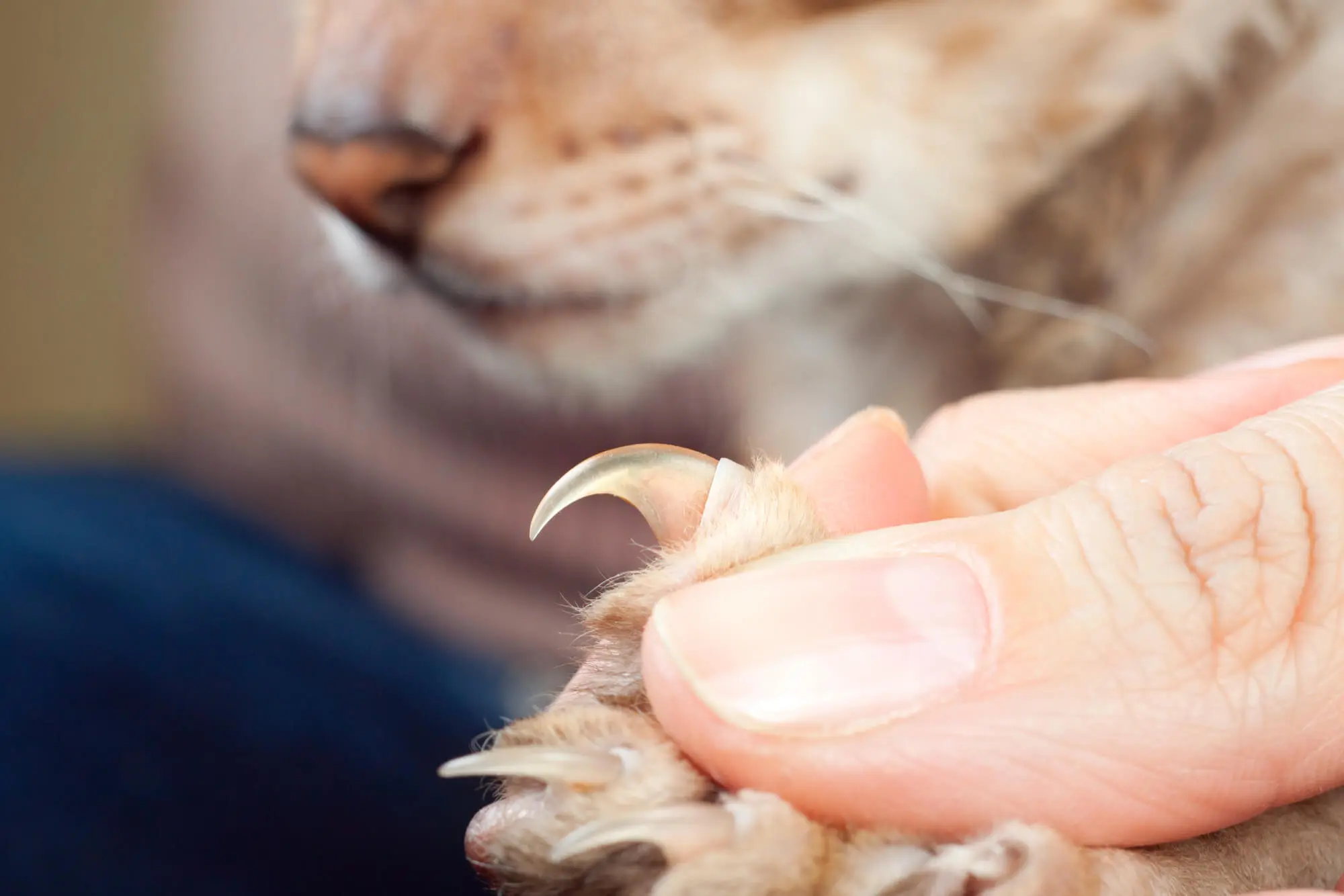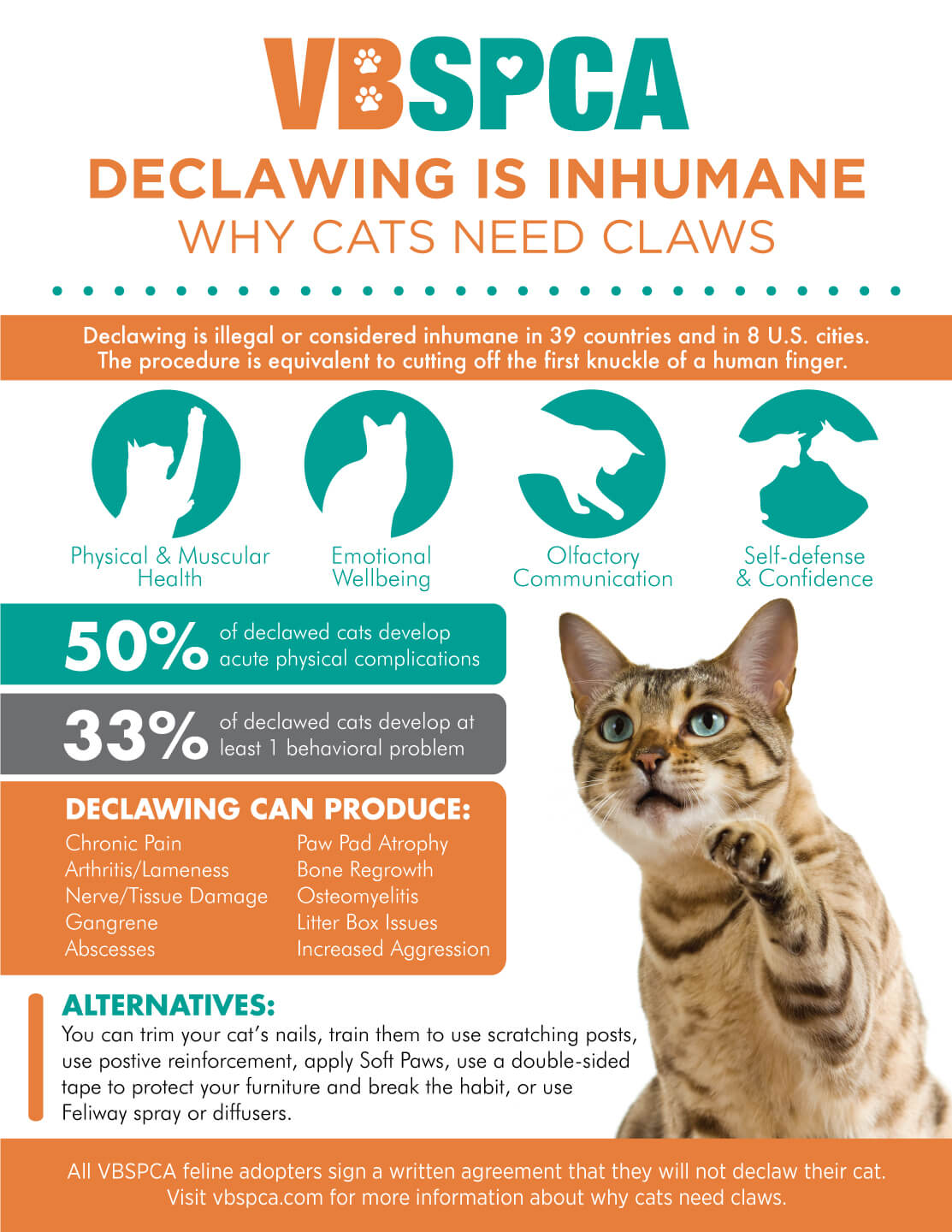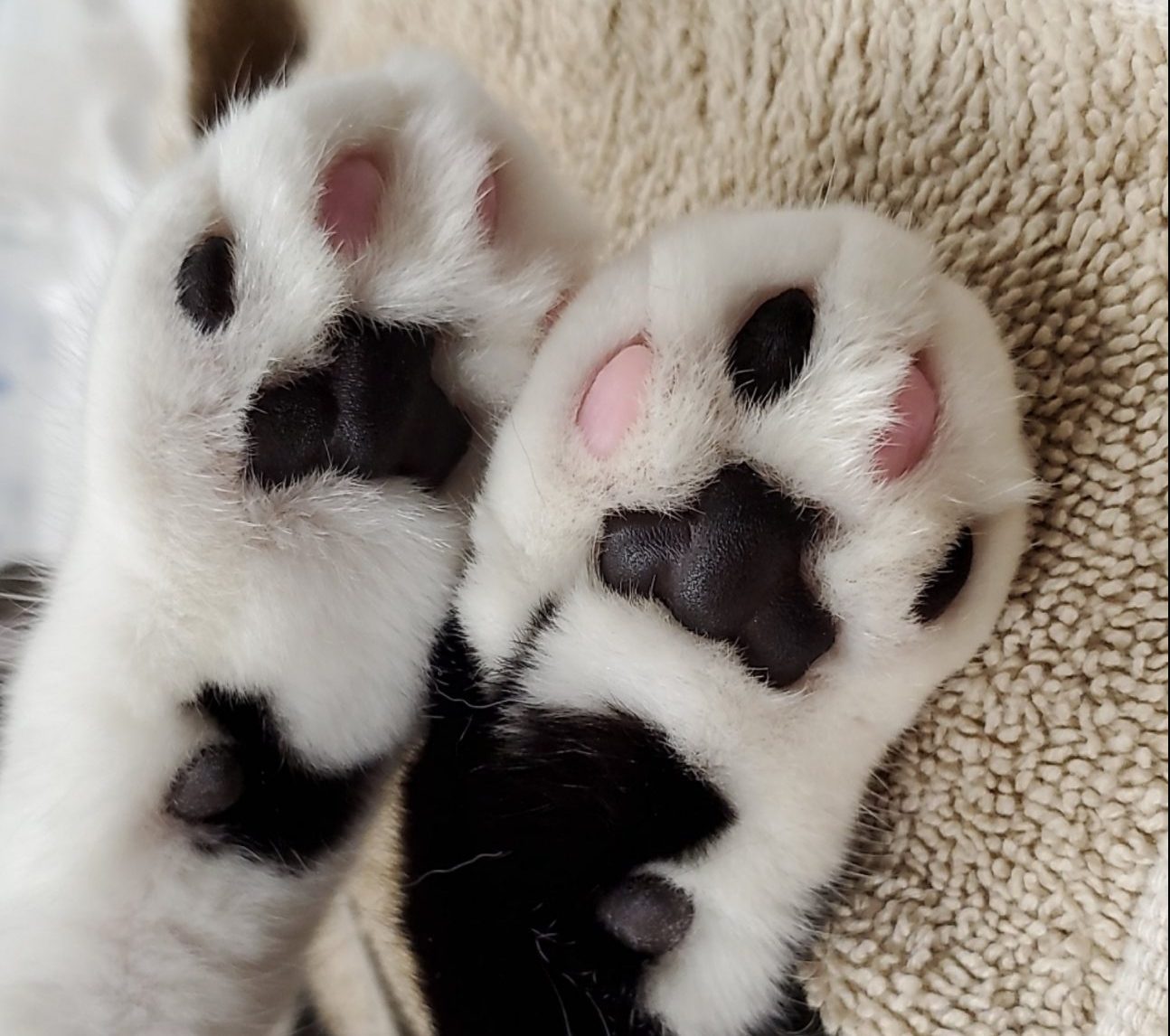Understanding Cat Declawing
Cat declawing, often seen as a simple solution to prevent furniture scratching, is much more than it seems. It’s a surgical procedure, not just a fancy manicure. Understanding what it entails is crucial before making a decision.
What is Cat Declawing?
Cat declawing is the removal of a cat’s claws. But it’s not as straightforward as it sounds. The procedure involves amputating the last bone of each toe, which is attached to the claw. It’s akin to cutting off a human finger at the last joint. The American Veterinary Medical Association (AVMA) provides a detailed explanation of the process.
Why Do People Declaw Cats?
The primary reason for declawing is to prevent cats from scratching furniture or causing harm. It’s a common practice, especially among indoor cat owners. However, it’s worth noting that scratching is a natural behavior for cats. It helps them stretch their muscles, mark their territory, and keep their claws sharp.
The Controversy Surrounding Cat Declawing
Cat declawing is steeped in controversy. Some argue it’s a necessary measure to protect furniture and prevent injuries. Others consider it inhumane and unnecessary. The debate is so intense that several countries, including the United Kingdom, Australia, and many European nations, have banned the practice due to animal welfare concerns.
Implications of Cat Declawing
Declawing can have serious implications for cats.

It can cause pain, behavioral changes, and increased vulnerability. Cats are digitigrade animals, meaning they walk on their toes. Declawing alters their gait, potentially causing long-term discomfort. Negative behavioral changes, such as biting or avoiding litter boxes, can occur due to pain or altered mobility. The American Association of Feline Practitioners (AAFP) strongly opposes routine or elective cat declawing due to these concerns.
Think Before You Act
Before deciding to declaw your cat, it’s important to understand the potential risks and consequences. It’s not a decision to be taken lightly. Many veterinarians refuse to perform declawing procedures in support of animal welfare, focusing instead on educating owners about alternative methods.
In the end, remember that your cat’s well-being is paramount. It’s not just about protecting your furniture. It’s about respecting the natural behaviors and needs of your feline friend. Consider alternatives to declawing, such as regular nail trimming, scratching posts, and behavior training. These methods can help redirect your cat’s natural scratching behavior without causing harm.
Understanding cat declawing is the first step in making an informed decision. Your cat’s health and happiness depend on it. So, take the time to weigh the pros and cons, consult with professionals, and consider all the alternatives. Your furry friend will thank you.
Cost Breakdown of Cat Declawing
Understanding the costs associated with cat declawing is crucial. It’s not a simple or cheap procedure. It involves several stages, each with its own costs. Let’s delve into the details.
Pre-Surgical Examinations
Before the procedure, your cat will need a thorough check-up. This is to ensure they are healthy enough for surgery. The cost of these examinations can vary, but expect to pay around $50-$100. It’s a small price for your cat’s safety.
Anesthesia
Anesthesia is a must during declawing. It keeps your cat unconscious and pain-free. The cost of anesthesia can range from $50 to $200. Remember, it’s not about saving money. It’s about ensuring your cat’s comfort.
Surgical Fees
The bulk of the cost lies in the surgical fees. These can vary greatly, depending on the vet’s experience and location. The complexity of the procedure also plays a role. You could pay anywhere from $100 to $500.
Post-Operative Care
After the surgery, your cat will need pain medication. This is crucial for their comfort and recovery. The cost can range from $10 to $30.

Follow-Up Visits
Lastly, follow-up visits are necessary. They ensure proper healing and address any complications. These visits can cost around $50 each.
So, the total cost of cat declawing can range from a few hundred to several thousand dollars. It’s a significant investment. But remember, it’s not just about the money. It’s about your cat’s well-being.
Before making a decision, consider the potential risks. Declawing can cause long-term discomfort and behavioral changes. The American Veterinary Medical Association (AVMA) advises against routine declawing for non-medical reasons.
Consider alternatives to declawing. Regular nail trimming, scratching posts, and behavior modification techniques can help. They are less invasive and often cheaper.
Remember, your cat’s health and happiness are paramount. Make an informed decision. Consult with professionals. Weigh the pros and cons. Your furry friend will thank you.
Methods of Cat Declawing and Their Costs
When it comes to declawing your feline friend, there are two main methods: traditional surgical declawing and laser declawing. Each has its own costs and considerations.
Traditional Surgical Declawing
The traditional surgical method involves using a scalpel or clippers to remove the claw. This is not a simple nail trim. It’s akin to amputating a finger at the last joint. It’s a serious procedure.
The cost of traditional surgical declawing can vary. It largely depends on the vet’s experience and location. You could expect to pay anywhere from $100 to $500.
While this method is generally less expensive, it’s not without risks. Complications can arise, such as infection or nerve damage. It’s crucial to consider these potential risks before making a decision.
Laser Declawing
Laser declawing, on the other hand, employs a laser beam to remove the claws. It’s a more modern approach. It’s often touted as less painful and quicker to heal.
However, laser declawing is typically more expensive than the traditional method. The cost can range from a few hundred to over a thousand dollars. The higher cost is due to the specialized equipment and training required.
While laser declawing may have some advantages, it’s not risk-free.

Complications can still occur, such as burns or tissue damage. It’s important to weigh these risks against the benefits.
Consider the Costs and Risks
Whether you choose traditional surgical declawing or laser declawing, the costs can add up. You’ll need to budget for pre-surgical examinations, anesthesia, the procedure itself, and post-operative care.
But remember, it’s not just about the financial cost. It’s about the potential impact on your cat’s health and well-being. Declawing can cause long-term discomfort and behavioral changes.
The American Veterinary Medical Association (AVMA) advises against routine declawing for non-medical reasons. They recommend considering alternatives to declawing, such as regular nail trimming, scratching posts, and behavior modification techniques.
Seek Professional Advice
Before making a decision, consult with a professional. A reputable vet can provide valuable advice. They can help you understand the pros and cons of each method. They can also guide you on the best course of action for your cat’s unique needs.
Remember, your cat’s health and happiness are paramount. Make an informed decision. Your furry friend will thank you.
Potential Additional Costs and Risks
Declawing your cat is not a decision to be taken lightly. It’s more than just the initial procedure. There are potential additional costs and risks to consider.
Follow-Up Visits
After the procedure, follow-up visits are crucial. These visits ensure proper healing. They also address any post-surgical complications. The cost of these visits can add up. They are often not included in the initial declawing fee.
Complications
Complications can arise from declawing. These may include pain, infection, and bleeding. These complications can lead to additional vet visits. They can also lead to extra costs for medication or further treatment.
Risks
The risks associated with declawing are significant. Changes in behavior are common. Your cat may become more aggressive or withdrawn. They may also experience long-term pain. There’s even an increased risk of developing arthritis.
Long-Term Implications
Declawing can have long-term implications for your cat. It can alter their walking and jumping abilities. It can also have a mental and emotional impact.
The regular nail trimming guide.
Scratching Posts
Scratching posts are another great option. They allow your cat to satisfy their natural instinct to scratch while protecting your furniture. Scratching posts come in various sizes and materials. They offer cats an opportunity to mark their territory, stretch, and relieve stress. It’s important to choose durable materials to withstand frequent use. Providing multiple scratching options throughout the house can help divert cats from using furniture or carpeted areas as scratching surfaces. For more on selecting and placing scratching posts, visit this link.

Nail Caps
Nail caps, also known as soft paws, are vinyl caps that can be glued to the cat’s nails. They prevent scratching damage while allowing your cat to engage in their natural behavior. Nail caps are available in different colors and sizes. They can last for several weeks before needing to be replaced. Some are made of non-toxic materials, ensuring they are safe for cats if they accidentally ingest them. For usage and application instructions, see this nail caps guide.
Gradual Introduction and Positive Reinforcement
Introduce these alternatives gradually. Use positive reinforcement techniques, such as treats or praise, to encourage their use. Some cats may require desensitization and gradual training to accept nail trimming or wearing nail caps.
Remember, your cat’s health and happiness are paramount. By utilizing these alternatives, you can protect your furniture and belongings while still allowing your cat to engage in their natural scratching behavior. Make an informed decision. Your furry friend will thank you.
